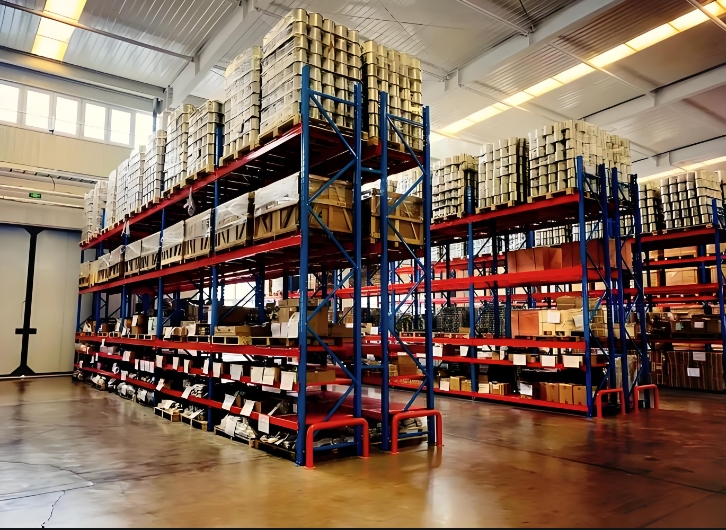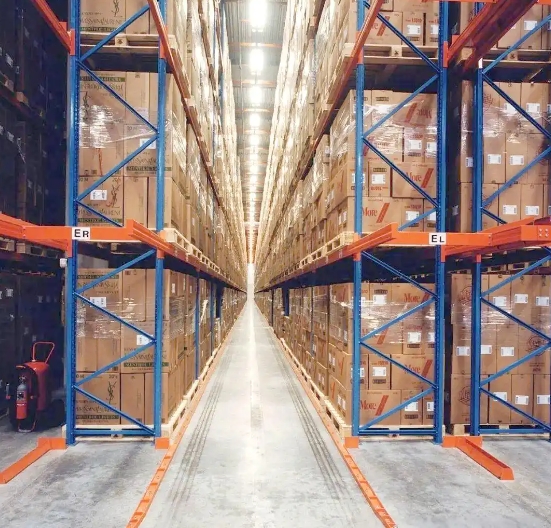In the fast-paced world of logistics and inventory management, the backbone of any successful operation is often its most static component: the warehouse storage shelves. These structures are far more than simple metal frames; they are a critical investment that dictates workflow, safety, and overall productivity. Selecting, maintaining, and optimizing your shelving system can mean the difference between a streamlined, profitable operation and a chaotic, inefficient one. This article delves deep into the world of warehouse storage shelves, exploring their various types, key selection criteria, benefits, maintenance needs, and how they are evolving with modern technology, while also addressing common challenges faced by warehouse managers.

Not all storage needs are created equal, and thankfully, neither are the warehouse storage shelves. The type of inventory you handle—its size, weight, and turnover rate—will directly determine the most suitable shelving system for your facility.
The most common and versatile type is selective pallet racking. This system provides direct access to every single pallet load, making it ideal for warehouses with a wide variety of SKUs. Each pallet is typically housed on horizontal load beams that can be adjusted vertically, offering flexibility for items of different heights.
For operations requiring high-density storage, drive-in or drive-through racking is a popular solution. These systems eliminate aisles by allowing forklifts to drive directly into the rack structure to store and retrieve pallets. They are excellent for storing large quantities of similar products but operate on a Last-In, First-Out (LIFO) basis, which can be a limitation for some inventory types.
Another high-density option is push-back racking. This system uses carts on inclined rails nested within the warehouse storage shelves. When a new pallet is loaded, it pushes the existing pallets back. When retrieving a pallet, the next one moves forward automatically. This allows for deeper storage than selective racks while still offering better selectivity than drive-in systems.
For smaller, lighter items that are not palletized, shelving units or mezzanine floors are often employed. These smaller, more modular warehouse storage shelves are perfect for organizing parts, tools, or boxed goods, and can often be reconfigured easily as needs change.
Investing in the warehouse storage shelves is a significant decision. Several crucial factors must be evaluated to ensure you choose a system that aligns with your operational goals and constraints.
First and foremost is weight capacity. You must have a clear understanding of the maximum load each shelf and the overall bay will need to support. Overloading shelves is a primary cause of catastrophic failures and serious safety incidents. The dimensions of your inventory—both in terms of the individual items and the total quantity—will dictate the size and configuration of your shelves. Consider the height, depth, and width needed to accommodate your products without wasting valuable space.
The layout and available space in your warehouse are also critical. You need to design the layout of the warehouse storage shelves to maximize storage density while maintaining necessary aisles for equipment and personnel. The choice of forklifts or other Material Handling Equipment (MHE) will influence the required aisle width, which in turn affects how much total storage you can fit.
Finally, always think about future growth and flexibility. Your business will evolve, and your storage system should be able to adapt. Opt for systems that are easily adjustable and scalable. Consider how easily you can reconfigure the warehouse storage shelves to accommodate new product lines or changes in demand.
Implementing the right shelving system delivers a powerful return on investment through multiple channels. The most immediate benefit is a dramatic increase in storage density and space utilization. By going vertical and choosing a system designed for your specific inventory, you can store more goods within the same square footage, delaying or eliminating the need for a costly facility expansion.
Efficiency and productivity also see a major boost. Well-organized warehouse storage shelves reduce the time workers spend searching for items. Clear labeling, logical organization, and easy access all contribute to faster picking, packing, and stocking processes. This leads to higher order fulfillment rates and lower labor costs.
Furthermore, a properly designed and installed system greatly enhances safety. Sturdy, reliable shelves that are not overloaded prevent collapses and accidents. Features like column guards, end-of-aisle protectors, and secure beam locking mechanisms help protect both your inventory and your most valuable asset: your employees.

Even the best systems can encounter issues. Being aware of these common problems is the first step toward preventing them.
Structural Damage and Wear: Over time, the warehouse storage shelves can suffer damage. The most common issue is impact from forklifts, which can bend upright frames, dislodge beams, or crack components. This damage compromises the structural integrity of the entire system and must be addressed immediately. Regular wear and tear from constant loading and unloading can also loosen connections.
Improper Loading and Overloading: This is perhaps the most frequent and dangerous mistake. Exceeding the designated weight capacity of a shelf or beam can lead to bending, collapse, and dropped inventory. Similarly, loading pallets unevenly or in a way that doesn't properly distribute the weight creates a significant hazard.
Poor Space Utilization and Inefficient Layout: Many warehouses suffer from wasted space. This can be due to shelves that are too tall for the inventory, leaving empty vertical space, or aisles that are too wide. An inefficient layout can create long travel times for pickers, creating bottlenecks and reducing overall throughput.
Lack of Maintenance and Inspection: Warehouse storage shelves require regular, scheduled inspection. Failing to check for loose bolts, damaged components, or misaligned frames can allow minor issues to develop into major safety risks. A lack of a formal inspection protocol is a common oversight in many facilities.
Incompatibility with Inventory or Equipment: Using the wrong type of shelving for your products is a fundamental problem. For example, using light-duty shelving for heavy pallets will inevitably fail. Similarly, if the shelving layout isn't compatible with the reach capabilities of your forklifts, you will be unable to access your highest inventory levels.
To mitigate the common problems listed above, a proactive approach to maintenance is essential. Implementing a scheduled inspection program is non-negotiable for safety and longevity.
Visual inspections should be conducted regularly by warehouse staff, looking for obvious signs of damage, corrosion, or overload. Furthermore, a formal, documented inspection by a competent person (either a trained internal expert or a third-party professional) should be performed at least annually. This inspection should check the plumb and alignment of upright frames, the secure engagement of all beams and safety locks, and the condition of all components.
Any identified damage, even if it seems minor, must be repaired immediately. Most reputable manufacturers offer replacement parts like beams, wire decking, and frame connectors. Never attempt to weld or straighten a damaged component, as this can weaken the metal and create a greater hazard.
Finally, ensure all employees are properly trained on safe practices around the warehouse storage shelves. This includes correct loading procedures, understanding weight limits, and how to operate equipment safely in the aisles to avoid impacts.
The evolution of warehouse storage shelves is closely tied to the rise of automation and data-driven logistics. We are already seeing the integration of shelving systems with automated storage and retrieval systems (AS/RS), where robots navigate the racking to retrieve and store goods, maximizing speed and density while minimizing labor.
The concept of the "smart warehouse" is also influencing shelving design. This includes the use of sensors mounted on warehouse storage shelves to monitor load weight, detect impacts, and even track inventory levels in real-time. This data feeds into a Warehouse Management System (WMS), providing unprecedented visibility and control over inventory and the health of the storage infrastructure itself.
In conclusion, the warehouse storage shelves are a foundational element that demands careful consideration. By understanding the different types, carefully selecting a system based on your specific needs, and committing to a rigorous maintenance and inspection routine, you can transform your shelving from a simple storage solution into a powerful tool for driving efficiency, safety, and growth in your operation.
 Wechat
Wechat
 Whatsapp
Whatsapp